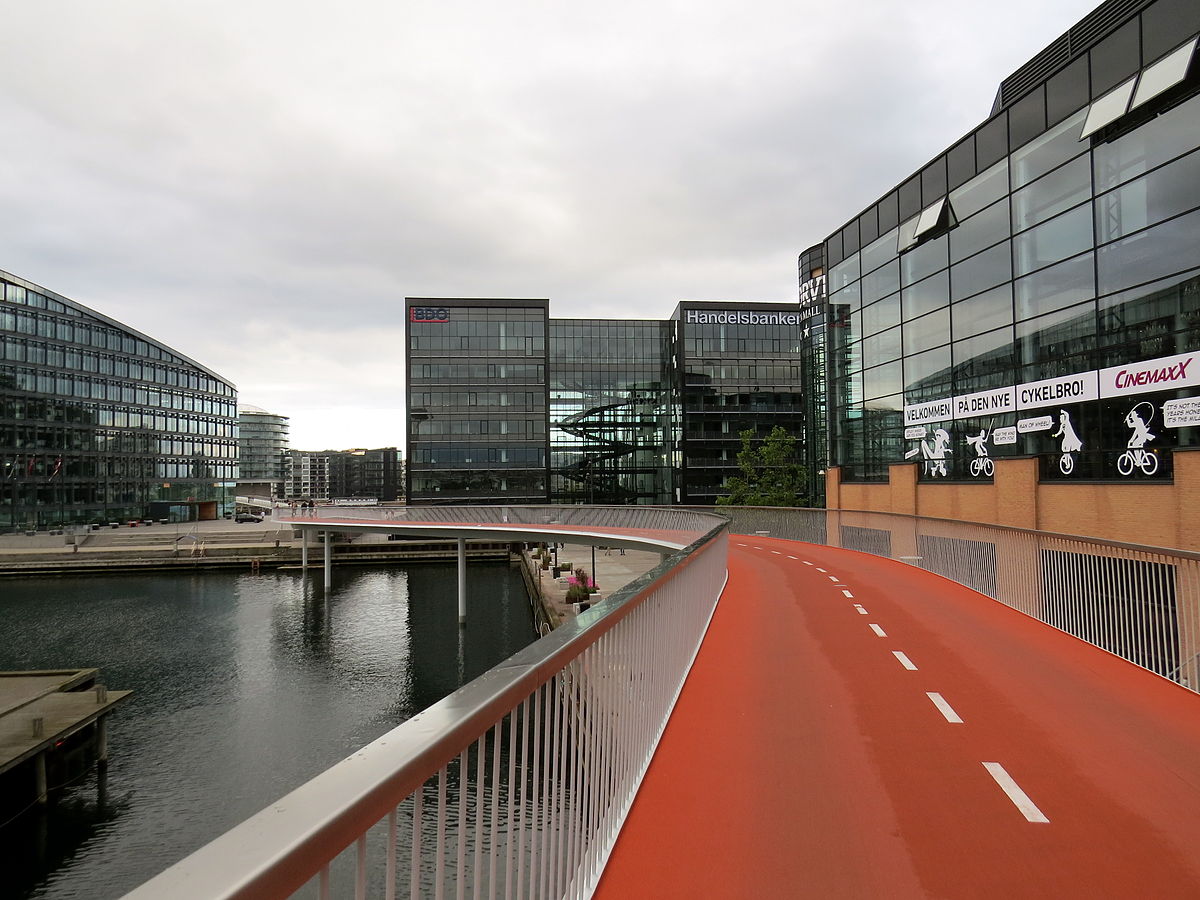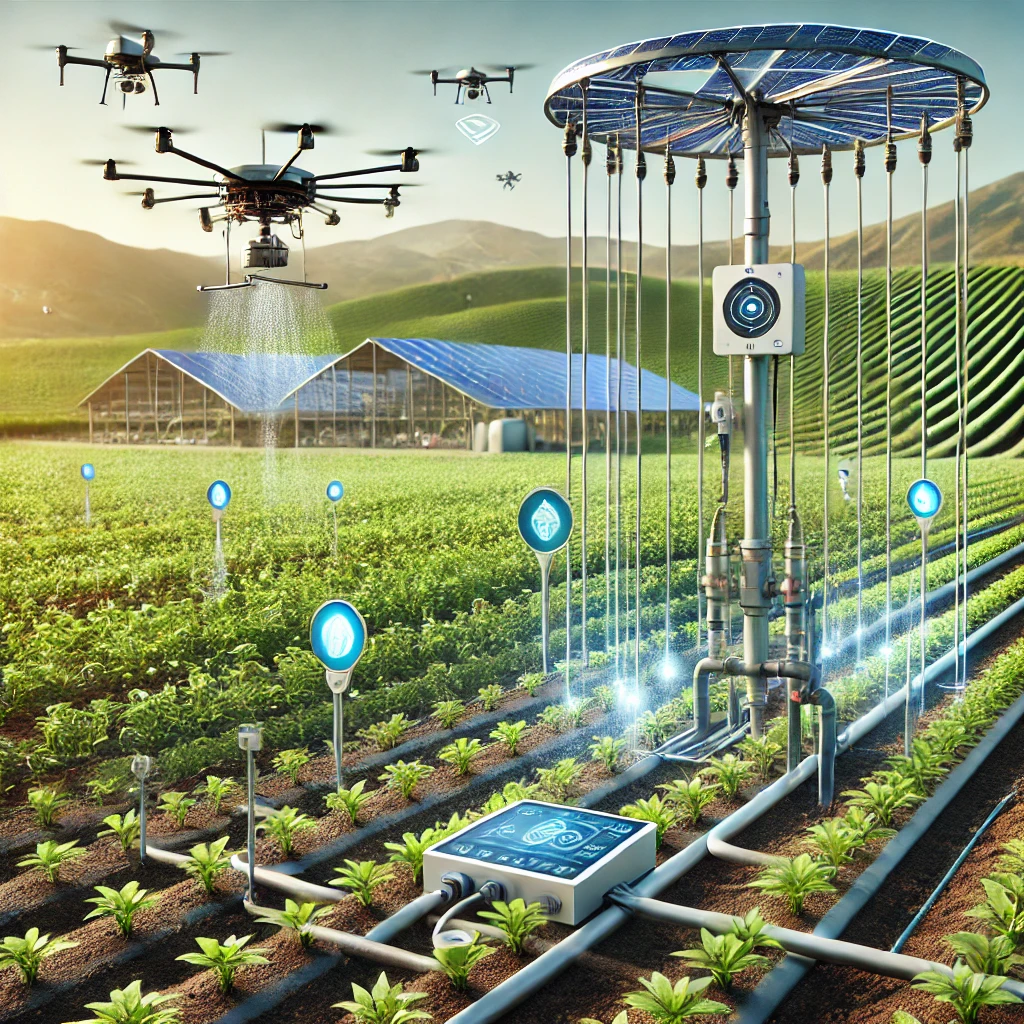NisargDesai's Idea / Prospect
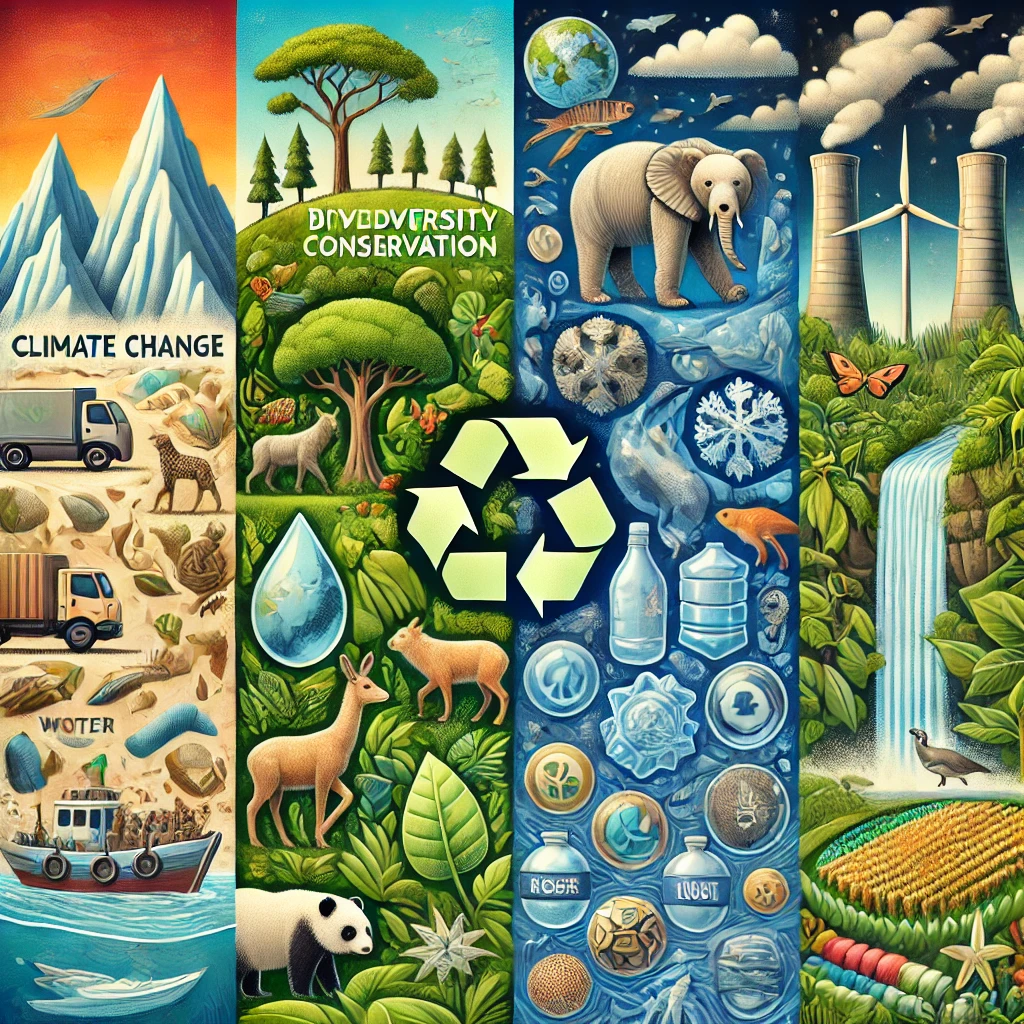
Why It’s Critical: Climate change is accelerating, with 2023 marking one of the hottest years on record, and some regions are facing unprecedented heat waves, droughts, and natural disasters. If global temperatures rise by 2.7°C by the century’s end, we’ll experience catastrophic changes, from coastal cities going underwater to severe agricultural disruption.
Solutions Needed and Examples:
- Decarbonizing Energy Sources: The International Renewable Energy Agency (IRENA) notes that renewables could supply up to 86% of global electricity by 2050. Example: Denmark has committed to generating 100% of its electricity from renewables by 2030.
- Carbon Capture and Storage (CCS): CCS can capture up to 90% of CO₂ emissions from sources like power plants. Example: The Boundary Dam CCS Project in Canada captures 1 million tons of CO₂ annually.
- Energy Efficiency Measures: Energy efficiency improvements could halve energy demand growth. Example: Japan has adopted energy-efficient building codes and appliance standards that have cut down energy use significantly.
- Sustainable Land Use: Forest preservation is vital, as deforestation contributes around 10% of annual GHG emissions. Example: Costa Rica has reversed deforestation, doubling its forest cover while promoting eco-tourism and sustainable land use.
Why It’s Critical: The Earth is experiencing its sixth mass extinction, with species vanishing at a rate 100 to 1,000 times faster than normal due to human activity. This not only reduces ecosystem resilience but also affects our food systems, water sources, and the stability of natural cycles.
Solutions Needed and Examples:
- Protected Natural Habitats: Protecting natural areas helps maintain biodiversity and prevent species loss. Example: The Amazon Rainforest hosts 10% of known species; countries like Brazil have created protected areas, although illegal deforestation remains a challenge.
- Restoration Projects: Restoration initiatives help recover damaged ecosystems. Example: China’s "Great Green Wall" reforestation project has planted over 66 billion trees, aimed at reversing desertification.
- Wildlife Corridors: Corridors allow species to migrate safely between habitats, which is crucial for genetic diversity. Example: The Yellowstone to Yukon (Y2Y) initiative protects migration corridors for large mammals across Canada and the U.S.
- Reducing Wildlife Exploitation: Curbing the wildlife trade and hunting can protect endangered species. Example: Kenya’s strict anti-poaching laws have reduced the poaching of elephants and rhinos, helping populations stabilize.
Why It’s Critical: Freshwater scarcity is already a reality for over 2 billion people, and climate change worsens the situation with increased droughts and extreme weather events. Without sustainable management, water shortages could lead to food crises and geopolitical conflict.
Solutions Needed and Examples:
- Improving Water Efficiency: Improving irrigation efficiency in agriculture can reduce water use by up to 30%. Example: Israel’s drip irrigation technology has revolutionized agriculture, reducing water use while boosting crop yields.
- Protecting Water Bodies: Protecting rivers, lakes, and groundwater from pollution is crucial for clean water supplies. Example: The Ganges River Cleanup in India addresses industrial waste and sewage, critical for millions dependent on the river.
- Desalination and Recycling Innovations: Desalination and recycling offer alternative water solutions. Example: Singapore’s NEWater system recycles wastewater, meeting 40% of the nation’s water needs.
- Integrated Water Resource Management (IWRM): Managing water resources collaboratively across regions ensures sustainable use. Example: The Mekong River Commission coordinates sustainable water usage among Southeast Asian countries sharing the river.
Why It’s Critical: Pollution from waste, particularly plastic, is devastating our oceans and land, with plastics taking centuries to decompose. Toxic waste from electronics and industry is also a major health hazard. If current trends continue, there could be more plastic in the ocean than fish by 2050.
Solutions Needed and Examples:
- Reducing Plastic Use: Reducing single-use plastic can prevent it from polluting oceans and harming marine life. Example: Rwanda banned plastic bags in 2008 and became one of the cleanest countries in Africa.
- Waste-to-Energy and Recycling Infrastructure: Efficient waste management systems reduce landfill use and recover valuable materials. Example: Sweden’s waste-to-energy plants convert almost 99% of household waste into energy.
- Toxic Waste Regulation: Enforcing stricter industrial regulations can prevent harmful chemicals from polluting ecosystems. Example: The European Union’s REACH regulation ensures strict monitoring of chemical usage.
- Consumer Awareness Campaigns: Educating people about sustainable practices can reduce waste and pollution. Example: South Korea’s recycling programs are highly effective, with citizens participating actively due to government-led education campaigns.
Why It’s Critical: Current agricultural practices are a major driver of environmental degradation, from deforestation to excessive water use and pollution. Agriculture accounts for 10-12% of global GHG emissions and is a leading cause of habitat loss and soil degradation. Without sustainable methods, food production systems could collapse under population pressure and climate impacts.
Solutions Needed and Examples:
- Regenerative Agriculture: Regenerative practices can enrich soil, reduce carbon emissions, and improve biodiversity. Example: The Rodale Institute in the U.S. promotes regenerative agriculture, showing it can increase yields while lowering environmental impact.
- Reducing Food Waste: Up to 30% of food is wasted globally, contributing to 8-10% of GHG emissions. Example: France implemented strict policies against food waste, including requiring supermarkets to donate unsold food to charities.
- Alternative Proteins and Vertical Farming: Reducing reliance on livestock by adopting alternative proteins and efficient farming methods can cut emissions and land use. Example: Singapore has invested heavily in vertical farms, producing fresh vegetables locally with minimal land.
- Agroforestry and Mixed Cropping: Integrating trees and diverse crops enriches soil, conserves water, and protects biodiversity. Example: In Kenya, agroforestry practices, like planting trees with crops, improve yields and provide firewood without harming forests.
Addressing these urgent environmental problems requires commitment at every level—from individuals to governments and corporations. Each solution example shows the impact these measures can have if they are implemented broadly, proving that a sustainable future is achievable with immediate, coordinated action.
Cities leading the way in human-powered vehicle (HPV) infrastructure and the sustainable transformations they’re making to incorporate bicycles and other HPVs into urban planning. This includes their specific initiatives, benefits, and challenges:
1. Copenhagen, Denmark
Copenhagen is often cited as the gold standard for bike-friendly cities. With over 385 kilometers of dedicated bike lanes and iconic infrastructure such as the "Cycle Snake" bridge, the city has invested heavily in making cycling safe and accessible. Since 2014, cycle traffic has increased by 80%, with approximately 20,700 daily crossings on the Cycle Snake alone. This infrastructure provides clear lanes separated from car traffic and integrates innovative elements like curb-separated cycle tracks, bike-priority traffic lights, and set-back stop lines that increase safety at intersections. Copenhagen aims to achieve a 50% cycling modal share for trips to work or education by 2025, bolstered by over €10 million allocated in 2022 alone for new cycling projects
Visit CopenhagenState of GreenVisitDenmark- Infrastructure: Copenhagen is known for its comprehensive bike infrastructure, with dedicated bike lanes, innovative bike bridges, and a focus on bike-first urban planning. Approximately 62% of residents commute by bike, supported by city policies aimed at reducing car traffic and promoting cycling as a primary mode of transportation.
- Benefits: Copenhagen’s investment in HPV infrastructure contributes to reduced air pollution, improved public health, and decreased traffic congestion. The city’s emphasis on cycling has helped make it one of the cleanest and most active cities globally.
- Challenges: Even with its impressive cycling infrastructure, Copenhagen faces challenges in managing high cyclist volumes and maintaining the infrastructure during cold winters. However, ongoing innovations, like heated bike lanes, aim to address this issue
2. Bogotá, ColombiaIn Bogotá, cycling is integrated into the city’s congestion management and environmental strategies. The Ciclovía program is a notable example: every Sunday, major streets are closed to cars, allowing thousands of cyclists and pedestrians exclusive use of around 120 kilometers of roadways. This initiative encourages cycling while reducing vehicular emissions on high-traffic days. Bogotá has also added permanent bike lanes to support everyday commuting, which has helped the city reduce traffic congestion and air pollution, while promoting a healthy lifestyle among residentsWorld Resources InstituteArchDaily
- Infrastructure: Bogotá has transformed its streets with dedicated bike lanes and the Ciclovía program, where cars are banned on certain roads every Sunday, allowing cyclists and pedestrians exclusive use. This initiative spans about 120 kilometers of roadways.
- Benefits: These efforts significantly reduce traffic congestion, cut down emissions, and provide residents with a safe, open space for recreation and commuting. The program is a model for other cities worldwide looking to promote sustainable and active transportation.
- Challenges: While the Ciclovía program is popular, Bogotá still needs more year-round dedicated bike lanes to encourage daily HPV commuting. The city is also working on addressing safety concerns and infrastructure maintenance to support its growing cyclist populationWorld Resources Institute.

Utrecht has embraced cycling with a robust approach to multimodal commuting, connecting bike infrastructure directly with public transit. It is home to the world's largest bike parking facility, which accommodates over 22,000 bikes, facilitating easy transitions between cycling and train travel. Utrecht has committed to doubling bike commuting by 2030 and expanding its network of "cycle superhighways" to support long-distance cycling, which reduces car dependency and lowers emissions. The city’s emphasis on convenience and connectivity has made cycling a primary mode of transport
ArchDailyVisit Copenhagen- Infrastructure: Utrecht has invested heavily in bike infrastructure, including the world’s largest bike parking facility, with over 22,000 spaces. The city integrates bike paths seamlessly with public transit stations, facilitating multi-modal commuting and reducing car dependency.
- Benefits: Utrecht’s emphasis on cycling infrastructure has led to a reduction in car use and associated pollution, as well as economic benefits from fewer infrastructure maintenance requirements compared to car-dependent cities. The facility serves as a central hub that improves the commute experience for cyclists, with easy access to amenities.
- Challenges: The demand for bike facilities continues to grow as cycling becomes even more popular, and the city is challenged with ensuring sufficient space and integration with other forms of public transport to keep up with the increasing usageArchDaily.

Fortaleza demonstrates how cities in emerging economies can prioritize cycling infrastructure. The city has funded its cycling projects through creative revenue sources, such as online parking fees, which financed a 524-kilometer expansion of its bike network. Fortaleza’s strategic bike lanes have made cycling safer and more accessible, helping reduce congestion and providing an affordable commuting alternative. This infrastructure boost increased the city’s cycling rate, showing that even in car-centric urban areas, bike-friendly infrastructure can change commuting patterns
World Resources InstituteC40 Knowledge Hub- Infrastructure: Fortaleza’s innovative approach to cycling infrastructure includes a strategic plan that expanded its bike lane network by 524 kilometers. The city funded this expansion through revenue generated from an online parking app, demonstrating a creative approach to financing.
- Benefits: Fortaleza’s bike lane expansion has helped make cycling safer and more appealing, significantly increasing the number of daily cyclists. The infrastructure has also contributed to a decrease in traffic congestion and vehicular pollution, benefiting the overall urban environment.
- Challenges: As a rapidly growing city, Fortaleza must balance infrastructure needs across various transport modes. Ensuring consistent maintenance and safety on its bike paths and addressing funding limitations remain key challenges as the city seeks to make cycling a primary mode of transportationWorld Resources Institute.
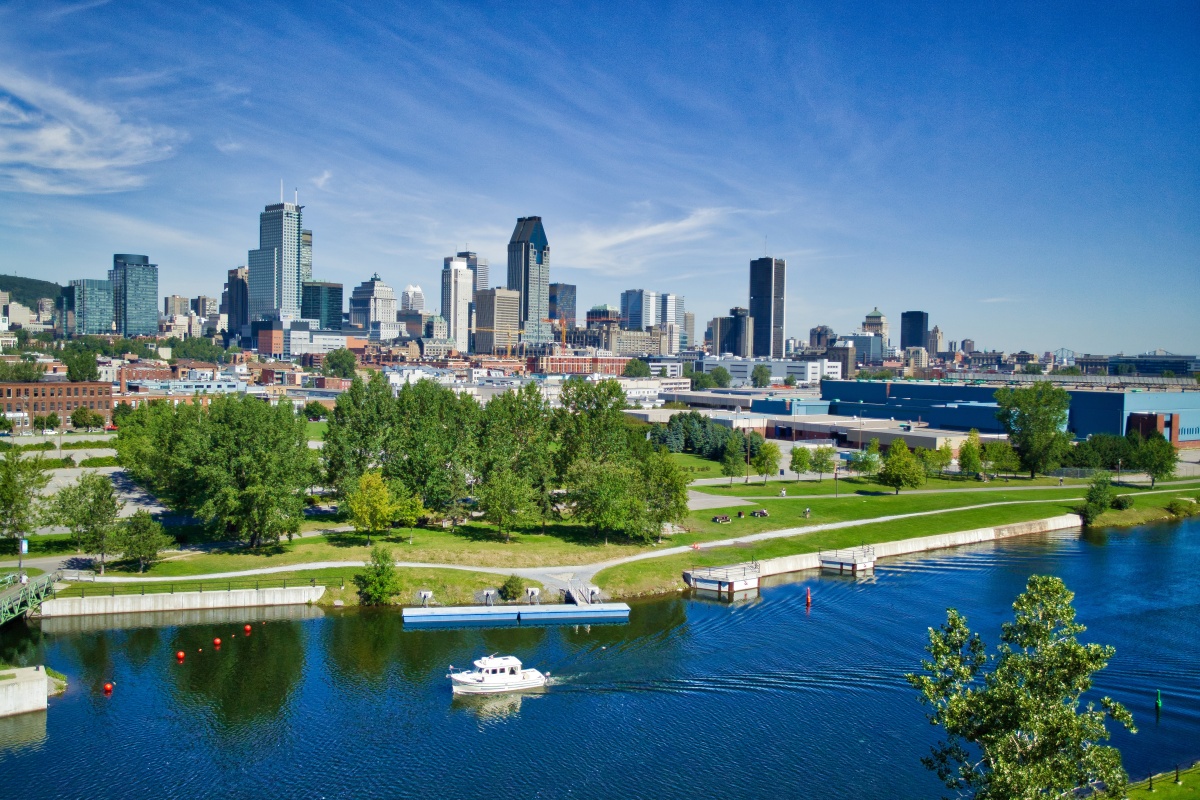
Montreal is North America’s leader in cycling infrastructure, with over 500 kilometers of bike paths and numerous protected lanes. The city integrates bike paths with its public transit system and operates one of the top-rated bike-sharing programs in the world. Montreal’s seasonal challenges are addressed through snow removal on key bike paths, ensuring year-round cycling access. The emphasis on safe and interconnected bike routes not only supports Montreal’s sustainability goals but also attracts cycling tourism, providing economic benefits as well
ArchDailyVisitDenmark- Infrastructure: Montreal is considered a leader in North America for its extensive bike infrastructure, which includes protected bike lanes and intersections specifically designed for cyclists. The city has also implemented bike-sharing programs to promote HPV use.
- Benefits: The increased accessibility and safety of bike infrastructure in Montreal have encouraged more residents to cycle, leading to reduced traffic congestion and emissions. The emphasis on cycling also supports a healthier lifestyle for residents and has boosted local tourism by making the city more accessible for visitors.
- Challenges: Montreal’s cold winters pose a challenge to year-round cycling. The city is exploring options for winter maintenance of bike paths, as well as other improvements to encourage all-season cycling, as cycling infrastructure investments are critical for reducing car use over timeArchDaily.
These cities showcase diverse strategies and highlight the profound impact HPV infrastructure can have on urban environments. Investment in cycling lanes, dedicated paths, bike parking, and multi-modal commuting options are essential steps for integrating HPVs into urban landscapes. Cities that prioritize HPVs benefit from reduced pollution, improved public health, and less congestion. However, seasonal challenges, safety concerns, and the need for ongoing funding remain as areas to address.
These examples demonstrate that with creative approaches to funding, thoughtful planning, and policy support, cities worldwide can create a future where human-powered transportation plays a central role.
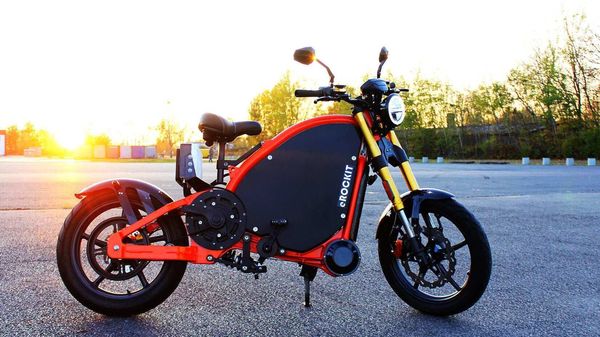
future prospects of human-powered vehicles, particularly focusing on new materials and designs, electric-assist technology, urban infrastructure improvements, and the environmental and economic impact of these developments. I'll also highlight some promising concepts currently in testing and development.
1. Electric-Assist Technology and Hybrid HPVs- Pedal-Assist Systems: These systems integrate a small electric motor that activates as the rider pedals, providing a boost. This approach allows for longer commutes and easier uphill rides, making human-powered transport more feasible in hilly cities and for less physically intensive travel.
- Hybrid Velomobiles: Hybrid velomobiles combine the aerodynamic efficiency of enclosed human-powered vehicles with electric-assist features. Designed to reach higher speeds with less exertion, they are especially practical for all-weather, year-round commuting.
- Battery Advancements: Lightweight, longer-lasting batteries are essential to making these hybrid systems viable. Developments in lithium-ion and, more recently, solid-state batteries could enhance the range and lifespan of electric-assist HPVs.
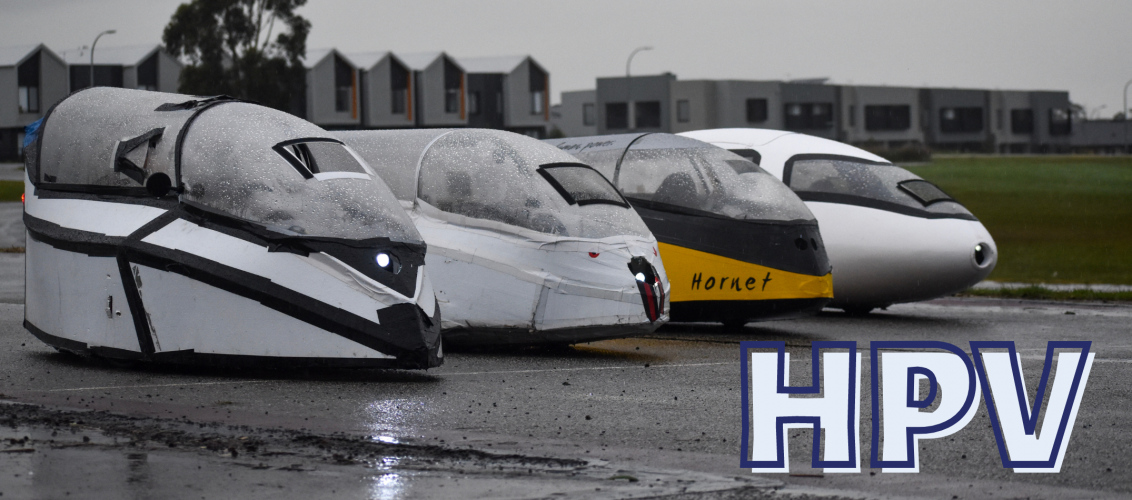
- Lightweight and Durable Materials: Modern materials like carbon fiber, Kevlar, and titanium make HPVs lighter, faster, and more robust. Carbon fiber is especially popular for high-end bicycles and velomobiles due to its high strength-to-weight ratio, though the cost remains a barrier for some applications.
- Streamlined Designs: Aerodynamic innovation has allowed for the creation of streamlined shapes that reduce air resistance, significantly increasing potential speeds. This is especially beneficial for velomobiles and recumbent bikes used in racing and endurance events.
- Sustainable Materials: Some designers are experimenting with sustainable materials, such as bamboo, for frames and components. Bamboo bikes are not only strong and lightweight but also eco-friendly and affordable, with a lower production impact than metal frames.
- Dedicated HPV Lanes: Many cities are building dedicated bike lanes or multi-use paths to accommodate HPVs. These lanes separate human-powered vehicles from motorized traffic, increasing safety and encouraging more residents to use HPVs.
- Bike-Share Programs: Bike-sharing systems, such as Citi Bike in New York or Vélib' in Paris, are expanding their offerings to include electric-assist bikes and cargo bikes. This makes HPVs accessible to more people and provides affordable options for short-distance trips.
- Policy Support: Cities and states are introducing incentives such as tax credits, subsidies, or grants to encourage the purchase of HPVs and electric-assist models. Programs aimed at reducing carbon footprints and promoting green transit often include provisions for HPVs.
- Carbon Emissions Reduction: With zero tailpipe emissions, HPVs can drastically reduce transportation’s impact on air quality and carbon emissions. They are also quieter, which can help reduce noise pollution, improving overall quality of life in urban environments.
- Affordable Mobility: Human-powered vehicles offer a cost-effective alternative to motorized vehicles. With lower operational and maintenance costs and no need for fuel, HPVs provide accessible transportation, especially in areas where car ownership might be economically challenging.
- Health Cost Savings: HPVs promote a more active lifestyle, which can reduce healthcare costs related to lifestyle diseases, such as obesity, diabetes, and cardiovascular issues. Cities that promote cycling and other human-powered transport modes often see significant public health benefits.
- Human-Powered Trains and Rails: There are concepts of small, pedal-powered rail vehicles that could be used on abandoned tracks or dedicated rail paths. These vehicles combine the efficiency of rail with human-powered mobility, potentially transforming unused rail networks into eco-friendly transit routes.
- Flying HPVs: Human-powered aircraft like the Daedalus and Gossamer Condor have demonstrated that sustained, albeit limited, flight is possible using human power. Future designs might integrate lightweight electric assistance, enabling short-range, eco-friendly flights.
- HPVs for Cargo and Freight: Innovations in cargo bikes and trikes are enabling the transport of goods in urban settings. With electric-assist options, these vehicles are helping to reduce delivery emissions in city centers and are especially promising for last-mile deliveries, where traditional trucks struggle with congestion.
- Infrastructure Gaps: While cities are improving HPV infrastructure, many places still lack sufficient lanes, storage, and repair facilities for bikes and similar vehicles.
- Affordability of Advanced HPVs: High-end HPVs with electric-assist and advanced materials can be cost-prohibitive, limiting access. As technology improves and demand grows, prices may decrease, but initial costs remain a challenge.
- Weather-Resistant Designs: Velomobiles offer a partial solution, but additional innovation in weatherproofing may be needed for widespread adoption, especially in areas with extreme climates.
The future of human-powered vehicles looks promising, particularly as technology, design, and urban infrastructure evolve. By combining human energy with advanced engineering and sustainable practices, HPVs could play a pivotal role in shaping an eco-friendly, health-conscious, and cost-effective transportation landscape. Whether for urban commutes, recreational activities, or even short-haul logistics, HPVs stand as a powerful tool in our transition toward greener and more sustainable cities.

Introduction to Human-Powered Vehicles
- Definition: HPVs are transport systems that operate solely on human muscle power. This category includes any vehicle in which human effort, typically pedaling, rowing, or pushing, drives the movement.
- History: Human-powered transportation dates back thousands of years, with early examples like foot-powered canoes or rafts. The modern era introduced bicycles, marking a revolution in efficient human-powered travel.
- Bicycles: The most common HPV, bicycles are globally popular for short-distance travel, exercise, and recreation.

- Recumbent Bikes: These are bikes where riders sit in a reclined position, offering greater aerodynamic efficiency and comfort for long rides.
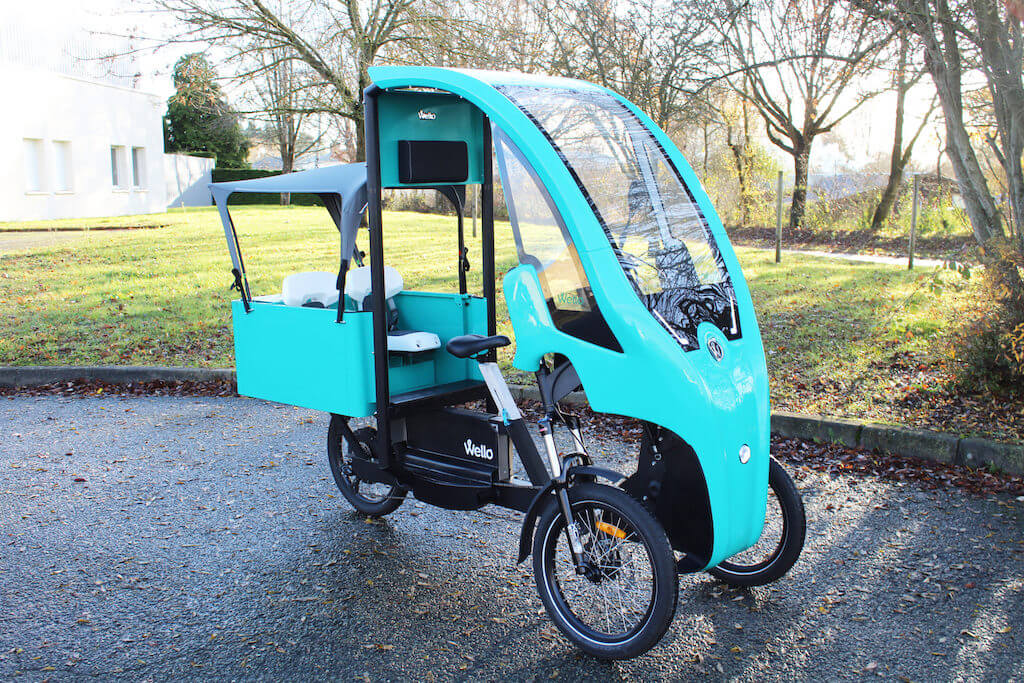
- Velomobiles: These are enclosed, often streamlined bicycles with aerodynamic designs, popular for commuters and enthusiasts who seek speed and weather protection.
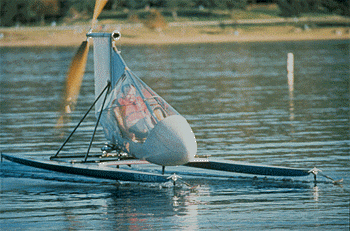
- Watercrafts: Kayaks, canoes, and paddleboards are human-powered options for water-based activities.

- Human-Powered Aircrafts: Though rare and experimental, these aircrafts are propelled by pedaling, with significant achievements like the flight of the Gossamer Albatross in 1979.
- Human-Powered Rail and Snow Vehicles: Examples include railbikes (bicycles adapted for railways) and pedal-powered snow vehicles.
- Environmental Impact: HPVs have a minimal carbon footprint, contributing to reduced greenhouse gas emissions and air pollution.
- Health and Fitness: Using HPVs increases physical activity, benefiting cardiovascular health, muscle tone, and mental well-being.
- Cost-Effectiveness: These vehicles require little to no fuel and have lower maintenance costs, making them affordable and sustainable.
- Traffic and Infrastructure: HPVs alleviate traffic congestion and have a low impact on infrastructure, as they require less space and maintenance.
- Physical Effort: HPVs require sustained physical exertion, which can be a barrier for longer distances, hilly terrains, or those with limited physical ability.
- Weather Dependency: Rain, snow, or extreme temperatures can make human-powered travel uncomfortable or dangerous, especially for open vehicles like bicycles.
- Speed and Range Limitations: While highly efficient, HPVs are slower than motorized vehicles, making them less suitable for long-distance or high-speed travel.
- Safety Concerns: HPVs, particularly bicycles, are vulnerable on roads, often lacking dedicated lanes and facing risk from motor vehicles.
- Electric-Assist Options: Adding electric motors for an extra boost, especially uphill, is becoming common. These hybrid systems are referred to as pedal-assist or pedelec vehicles.
- Advanced Materials and Design: Innovations in lightweight and durable materials, like carbon fiber, are creating faster, safer, and more comfortable HPVs.
- Urban Infrastructure: Cities are increasingly investing in HPV-friendly infrastructure, with expanded bike lanes, bike-sharing programs, and dedicated parking for increased accessibility.
Human-powered vehicles represent an innovative, sustainable, and healthy mode of transportation with a long history and promising future. As cities evolve to become more environmentally friendly and infrastructure improves, HPVs may play an even greater role in modern transportation.
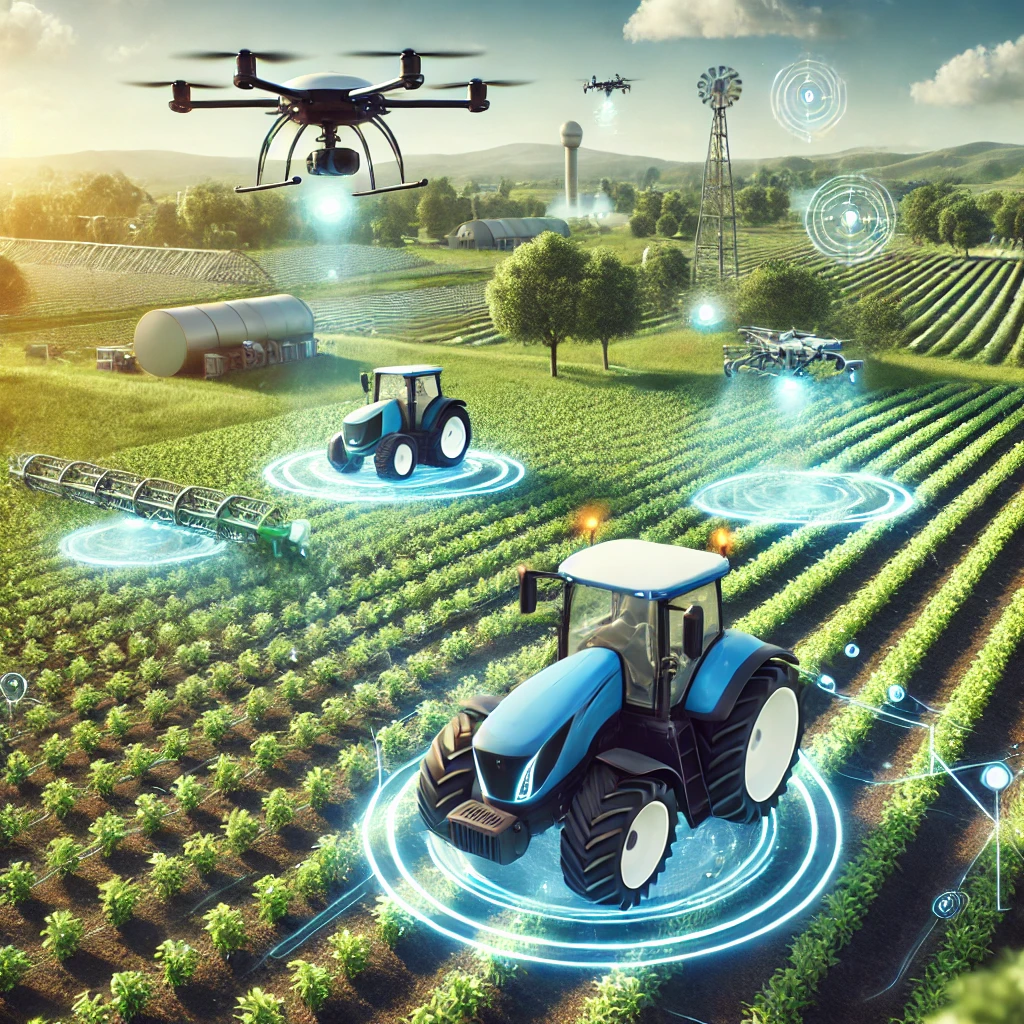
In recent years, technological advancements have transformed agricultural machinery, making farming more efficient, sustainable, and precise. These innovations are helping farmers overcome challenges like labor shortages, climate change, and the need to produce more food on limited land. Below are some of the most impactful technologies shaping the future of agricultural machinery.
1. Precision FarmingPrecision farming, also known as precision agriculture, involves using data and technology to optimize farming practices. This approach reduces waste and increases efficiency by applying resources like water, fertilizers, and pesticides only where and when they are needed.
- Drones: Agricultural drones are used to monitor crops, assess field conditions, and even apply fertilizers or pesticides in targeted areas. Equipped with sensors and cameras, drones provide real-time data on crop health, soil moisture levels, and plant growth. This enables farmers to make informed decisions about irrigation, fertilization, and pest control.
- GPS and Sensors: GPS technology allows farmers to create precise maps of their fields, showing variations in soil quality, crop yields, and other factors. This data, combined with sensors placed in the soil or on machinery, enables farmers to plant seeds, apply water, and spread fertilizers more efficiently. For example, variable rate technology (VRT) adjusts the amount of inputs applied across different parts of a field, optimizing resource use and improving yields.
Automation is revolutionizing the way farming is done, with autonomous machinery capable of performing tasks with minimal human intervention. These machines rely on AI, sensors, and GPS to navigate fields and carry out specific tasks such as plowing, planting, and harvesting.
- Autonomous Tractors: These driverless tractors can follow predetermined routes, ensuring that tasks like tilling or planting are completed with precision. Autonomous tractors are particularly useful for large farms where labor is scarce or expensive. They can work continuously, regardless of weather or time of day, reducing downtime and increasing productivity.
- AI-Powered Robots: Robots equipped with AI are being developed to perform a variety of tasks, from planting seeds to harvesting crops. For instance, some robots can identify and pick ripe fruits and vegetables without damaging them. AI systems can also analyze crop health and detect pests or diseases early, allowing for timely intervention and reducing crop loss.
Water management is a critical aspect of farming, especially in regions prone to drought or irregular rainfall. Smart irrigation systems use sensors, weather data, and automated controls to deliver the right amount of water to crops at the right time.
- Soil Moisture Sensors: These sensors monitor the moisture content in the soil, ensuring that crops receive water only when necessary. By avoiding over- or under-watering, smart irrigation systems help conserve water and improve crop health.
- Automated Irrigation Systems: Linked to weather forecasts and soil data, automated systems can adjust irrigation schedules based on real-time conditions. For example, if rain is expected, the system can delay watering, saving water and reducing costs.
Technological advances like these are not only improving the efficiency of farming operations but also making agriculture more sustainable. By using data and automation, farmers can reduce waste, improve yields, and minimize their environmental footprint. As these technologies continue to evolve, they will play a key role in addressing global food security and resource management challenges.
Challenges and Considerations
While agricultural machinery has brought immense benefits to farming, it also comes with challenges and considerations that need to be addressed for long-term sustainability and effectiveness. These challenges range from environmental concerns to economic factors and the adaptability of machinery for different farming scales.
1. Environmental ImpactAgricultural machinery, particularly large, fuel-powered equipment, can have significant environmental effects:
- Energy Consumption and Emissions: Many machines, especially tractors and harvesters, run on fossil fuels like diesel. This leads to carbon emissions that contribute to climate change. Additionally, the energy required to manufacture and operate this machinery adds to the carbon footprint of modern farming.
- Soil Degradation: The weight and repetitive use of heavy machinery can cause soil compaction, which reduces water infiltration and air circulation in the soil. Compacted soil is less productive, as it limits root growth and negatively affects plant health.
- Sustainable Practices: To mitigate these effects, there is a growing focus on developing more sustainable technologies, such as electric-powered machinery, fuel-efficient engines, and smaller, lighter equipment that reduces soil impact.
Agricultural machinery represents a major investment for farmers, and the financial burden can be significant, especially for small- and medium-sized farms.
- High Initial Costs: The upfront cost of purchasing advanced machinery like GPS-guided tractors, drones, and automated harvesters can be prohibitive for many farmers. Even leasing or renting machinery may not be affordable for small-scale farms.
- Maintenance and Repairs: Machinery requires regular maintenance to keep it functioning effectively. Breakdowns can lead to costly repairs and delays in critical farming operations, like planting or harvesting. Spare parts and technical expertise are often necessary, adding to the overall cost of ownership.
- Depreciation: Machinery also depreciates over time, meaning that its value decreases as it ages, potentially leading to reduced resale value or higher replacement costs.
While large commercial farms often have the resources to invest in and benefit from advanced agricultural machinery, smaller farms may face difficulties integrating such technologies:
- Scalability Issues: Many machines are designed for large fields and industrial-scale farming. Smallholders may not be able to use or justify the cost of this equipment on their smaller plots of land. However, efforts are being made to develop smaller, more affordable machines tailored to small-scale farming operations.
- Access to Technology: In some regions, especially in developing countries, farmers may not have access to the latest machinery due to poor infrastructure, lack of financial resources, or limited technical support. This can widen the gap between large, mechanized farms and smaller, manual operations.
Addressing these challenges requires a focus on innovation, cost-sharing models, and policies that support sustainable and inclusive technology adoption. By developing more eco-friendly machinery, offering flexible financial solutions, and creating equipment suitable for farms of all sizes, the agricultural sector can continue to evolve while minimizing the negative impacts.
As technology advances, the future of farming lies in precision agriculture, automation, and sustainable practices. These innovations allow farmers to optimize resource use, reduce environmental impact, and meet the challenges of feeding a growing population. However, it’s essential to balance the benefits of machinery with considerations such as environmental sustainability, cost-effectiveness, and ensuring that smaller farms can also access and benefit from these technological advancements.
Modern irrigation technology offers numerous benefits that enhance agricultural productivity, sustainability, and resource management. Here are some key advantages:
1. Water Conservation- Efficient Use: Modern systems, such as drip and sprinkler irrigation, apply water directly to the plant roots, minimizing evaporation and runoff.
- Reduced Waste: Precision irrigation techniques ensure that water is used only where and when needed, significantly reducing water waste.
- Optimal Water Supply: By providing the right amount of water at the right time, modern irrigation increases crop growth and yields.
- Consistency: Irrigation technology allows for consistent watering, which is crucial for maintaining healthy crops and maximizing production.
- Adaptation to Climate Change: Advanced irrigation systems can help farmers adapt to changing weather patterns and prolonged droughts by efficiently managing limited water resources.
- Storage Solutions: Technologies such as rainwater harvesting and water storage systems enable farmers to collect and store water during rainy seasons for use during dry periods.
- Reduced Erosion: Modern irrigation practices minimize soil erosion by reducing runoff and maintaining soil moisture.
- Nutrient Management: Systems like drip irrigation can be combined with fertigation (applying fertilizers through the irrigation system), allowing for better nutrient distribution and reduced leaching.
- Automation: Automated irrigation systems can be programmed to operate on schedules, reducing the need for manual labor and allowing farmers to focus on other important tasks.
- Remote Monitoring: Advanced technologies, such as sensors and smart irrigation controllers, enable farmers to monitor soil moisture levels and manage irrigation remotely, optimizing labor resources.
- Reduced Water Costs: Efficient irrigation methods lower water bills and operational costs, particularly in areas where water is expensive or scarce.
- Lower Energy Consumption: Drip and low-pressure systems can reduce energy costs associated with pumping water.
- Uniform Growth: Consistent watering leads to more uniform crop growth, which can improve the overall quality of the produce.
- Reduced Disease Risk: Proper irrigation management can help prevent water stress and associated plant diseases, leading to healthier crops.
- Sustainable Practices: Modern irrigation techniques promote sustainable agricultural practices by reducing the environmental impact of water extraction and usage.
- Biodiversity Preservation: Efficient irrigation can help maintain local ecosystems by reducing the diversion of natural water sources for agricultural use.
- Data-Driven Decisions: Modern irrigation systems can integrate with precision agriculture technologies, allowing for real-time monitoring and data analysis to optimize water use and improve decision-making.
- Adaptable Systems: Modern irrigation technologies can be scaled to fit various farm sizes, making them suitable for both smallholder and large commercial farms.
In summary, modern irrigation technology plays a crucial role in enhancing agricultural efficiency, sustainability, and resilience, benefiting farmers, the environment, and global food security.
Modern irrigation technologies offer numerous benefits that extend beyond water savings, impacting crop yields, environmental sustainability, and farm efficiency. For agriculture engineers, whether students or experienced professionals, understanding these advantages is essential for promoting and implementing these systems in real-world agricultural settings.
Water Savings
One of the most significant benefits of modern irrigation systems is their ability to conserve water. Traditional irrigation methods can waste up to 50% of water due to evaporation, runoff, and inefficient application. In contrast, technologies like drip irrigation and smart sensors ensure that water is applied precisely where and when it’s needed, reducing waste by as much as 30-60%. This is especially crucial in areas facing water shortages or in regions with unpredictable rainfall patterns. For engineers, designing systems that maximize water efficiency is key to sustainable agriculture.
Increased Crop Yields
By delivering water in a controlled and timely manner, modern irrigation systems directly enhance crop health and productivity. Drip irrigation, for instance, allows for consistent moisture levels at the root zone, promoting steady growth and improving yields by up to 40% in some crops. Smart systems that adjust irrigation based on real-time data also help avoid plant stress caused by over- or under-watering. Agriculture engineers can leverage these benefits to develop irrigation solutions that not only save water but also significantly increase agricultural output.
Reduced Environmental Impact
Modern irrigation systems play a critical role in reducing the environmental footprint of farming. Efficient water use helps prevent soil erosion, salinization, and nutrient leaching, all of which can degrade land quality over time. Furthermore, technologies that minimize energy consumption in pumping and distributing water contribute to lower greenhouse gas emissions. For professionals designing eco-friendly farming systems, these benefits are increasingly important as the agricultural sector moves toward more sustainable practices.
While modern irrigation technologies offer immense potential, their widespread adoption faces several challenges. However, these challenges also present valuable opportunities for both agriculture engineering students and professionals to innovate, overcome barriers, and advance the field.
ChallengesOne of the main challenges in implementing modern irrigation systems is the high upfront cost of technology. Systems such as drip irrigation or advanced sensor networks require significant initial investments, which can be a deterrent for small-scale farmers. Additionally, there is often a lack of technical expertise among farmers and laborers to operate and maintain these sophisticated systems, particularly in developing regions. Engineers must address these gaps by designing cost-effective solutions and providing training and support for system management.
Another challenge is infrastructure limitations in rural areas, where reliable access to electricity, internet, or water sources may be insufficient to support smart irrigation systems. Overcoming these barriers will require engineers to innovate with off-grid solutions, solar-powered pumps, or decentralized water systems to ensure technology can be applied in diverse settings.
OpportunitiesDespite these challenges, the rise of modern irrigation technology presents significant career and innovation opportunities for agriculture engineers. As demand for sustainable water management solutions grows, there is a rising need for professionals who can design, implement, and manage these advanced systems. Engineers can specialize in areas such as precision agriculture, integrating technologies like AI, IoT, and automation to enhance irrigation efficiency.
Furthermore, there are increasing government incentives and funding for projects that focus on water conservation and sustainable farming practices. Engineers can collaborate with governmental and international organizations to create scalable solutions that address the water scarcity crisis. By focusing on the opportunities to innovate, future engineers can play a pivotal role in transforming agricultural practices worldwide, ensuring that farming becomes more productive, sustainable, and resilient to climate challenges.
Modern irrigation systems represent a critical innovation in the future of agriculture, offering solutions to some of the industry's most pressing challenges, such as water scarcity, declining crop yields, and environmental degradation. For agriculture engineering students and professionals, mastering these technologies is not just an academic exercise—it’s essential for driving sustainable agricultural practices in the real world. Whether through the use of sensors, AI, or precision irrigation methods, engineers are uniquely positioned to revolutionize water management in farming, ensuring higher productivity with fewer resources.
As the global demand for food continues to rise, so too does the importance of efficient irrigation systems. By embracing and advancing these technologies, agricultural engineers can play a leading role in shaping the future of farming, making it more resilient, sustainable, and productive. The future of agriculture depends on today’s engineers to develop solutions that will meet the needs of tomorrow’s world.
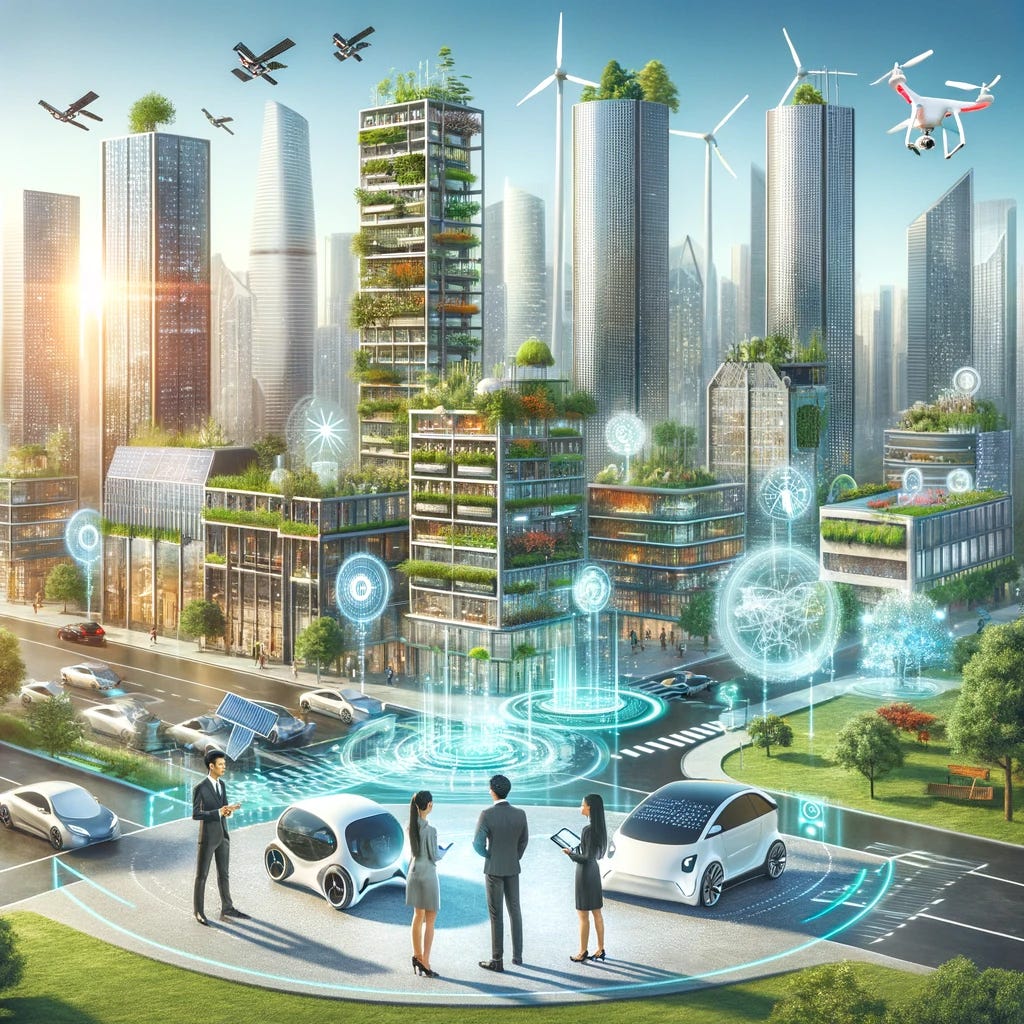
Humanity stands at a crossroads. As individuals, our choices not only define our own lives but also shape the future of our planet and society. In an increasingly digital, fast-paced, and environmentally challenged world, the responsibility for a better future lies not with governments or corporations alone, but with each of us.
To create a sustainable and advanced civilization that fosters happiness, peace, and longevity, each individual must adopt a lifestyle that nurtures the environment, embraces technological advancements mindfully, and contributes positively to the well-being of society. This article explores how a person can live harmoniously with nature, minimize their ecological footprint, and play an active role in advancing human civilization—all while leading a fulfilling, peaceful life.
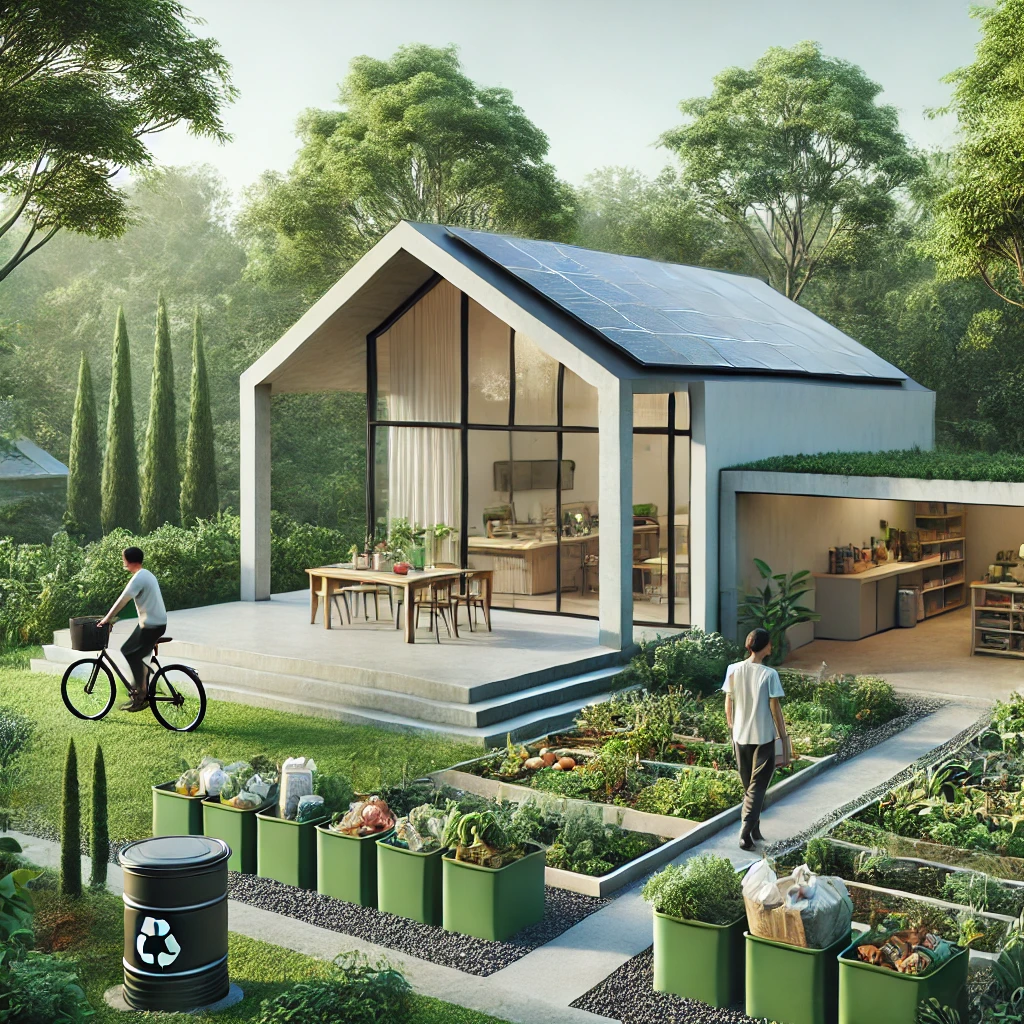
As an individual, the choices we make in our everyday lives—whether in how we consume, travel, or even eat—have far-reaching effects. Living sustainably is about more than just reducing waste; it's about adopting practices that align with the long-term health of the planet.
The Problem: Overconsumption and Environmental DegradationOne of the largest contributors to environmental degradation is the modern tendency toward overconsumption. The demand for more products, more energy, and more convenience leads to excessive waste, resource depletion, and pollution. Every item we purchase, every meal we eat, and every trip we take has an ecological cost.
A typical consumer lifestyle involves heavy use of non-renewable resources and reliance on disposable products. The rise in global temperatures, deforestation, and loss of biodiversity are largely the result of unchecked consumption and poor resource management on a personal level.
The Solution: Conscious Consumption and MinimalismTo contribute to a sustainable future, individuals need to adopt conscious consumption practices. This begins with minimalism—owning only what is necessary and valuing quality over quantity. Instead of accumulating possessions, individuals can focus on acquiring durable, repairable items that last longer and have less impact on the environment.
For instance, buying clothes made from sustainable, organic fabrics and reducing reliance on fast fashion can significantly decrease textile waste. The “buy less, choose well” philosophy advocated by designer Vivienne Westwood promotes responsible purchasing habits, urging people to buy higher-quality goods that are built to last.
In terms of daily consumption, reducing waste is key. Small actions like carrying a reusable water bottle, avoiding single-use plastics, and composting organic waste can collectively make a massive difference. These practices not only cut down on landfill waste but also reduce the demand for the extraction of new raw materials, which depletes the Earth’s natural resources.
The Problem: Energy Consumption and Carbon FootprintModern lifestyles rely heavily on energy, much of which is sourced from non-renewable, polluting fossil fuels. The carbon emissions generated from personal energy use—whether through home heating, cooling, or transportation—are among the leading causes of climate change.
The Solution: Energy Efficiency and Renewable PowerAs individuals, we have the power to drastically reduce our energy consumption and switch to cleaner alternatives. For example, installing energy-efficient appliances and using LED lighting in the home can cut electricity use by up to 75%. Simple habits like turning off lights, unplugging devices when not in use, and setting thermostats mindfully can also reduce unnecessary energy waste.
If possible, switching to renewable energy sources like solar power at home is a game-changer. Solar panels are now more affordable than ever and can allow individuals to generate their own clean electricity. Countries like Australia are seeing a rise in individuals installing solar panels on rooftops, making their homes energy-independent and carbon-neutral.
For transportation, opting for electric vehicles or cycling and walking instead of driving can drastically lower one’s carbon footprint. Norway has set a powerful example, with 80% of its new cars being electric, but on an individual level, even carpooling or using public transport can be impactful in reducing emissions.

Living sustainably isn’t just about how we interact with the external world. It also involves how we care for our mental and emotional health. A mindful lifestyle is essential for cultivating inner peace, which directly influences our interactions with others and the environment.
The Problem: Stress, Distraction, and Disconnection from NatureMany people in today’s world feel overwhelmed by work pressures, technology, and constant connectivity. The fast pace of life often leads to burnout, chronic stress, and a sense of disconnection from the natural world. When individuals are stressed or distracted, they tend to make unsustainable choices—choosing convenience over consciousness, opting for disposable goods, and overlooking the long-term impact of their actions.
The Solution: Practicing Mindfulness and Finding BalanceMindfulness is a personal practice that involves paying attention to the present moment without judgment. It helps individuals cultivate self-awareness, reduce stress, and make more deliberate choices in all areas of life. By practicing mindfulness, one can become more attuned to the impact of their actions, making it easier to adopt sustainable habits.
Meditation is a powerful tool for developing mindfulness. A regular meditation practice allows individuals to step back from their busy lives, reflect, and connect more deeply with themselves. This clarity enables people to focus on what truly matters—both personally and in relation to the environment.
For example, starting the day with a 10-minute mindfulness practice can set a calmer, more focused tone, helping people become more intentional in their choices. Apps like Headspace and Insight Timer offer guided meditation sessions specifically tailored to reducing stress, improving focus, and enhancing well-being.
The Problem: Over-Reliance on Technology and Screen TimeWhile technology has enabled incredible advances, overuse of devices can lead to mental exhaustion and disconnection from the physical world. People are spending more time on screens and less time outdoors, which is contributing to health issues like digital fatigue, sleep disturbances, and even anxiety.
The Solution: Digital Mindfulness and Nature ImmersionTo counteract the negative effects of technology, individuals can practice digital mindfulness—being conscious of how they use technology and creating boundaries. For instance, setting time limits for social media, turning off notifications, and scheduling regular "screen-free" hours can improve mental clarity and emotional well-being.
Another powerful solution is to spend more time in nature. Numerous studies show that being in natural environments reduces stress and boosts mental health. Forest bathing, a Japanese practice known as Shinrin-yoku, involves immersing oneself in nature and experiencing its calming, restorative effects. By making it a habit to walk in the park, hike, or even simply sit in a garden, individuals can reconnect with the natural world and experience greater well-being.
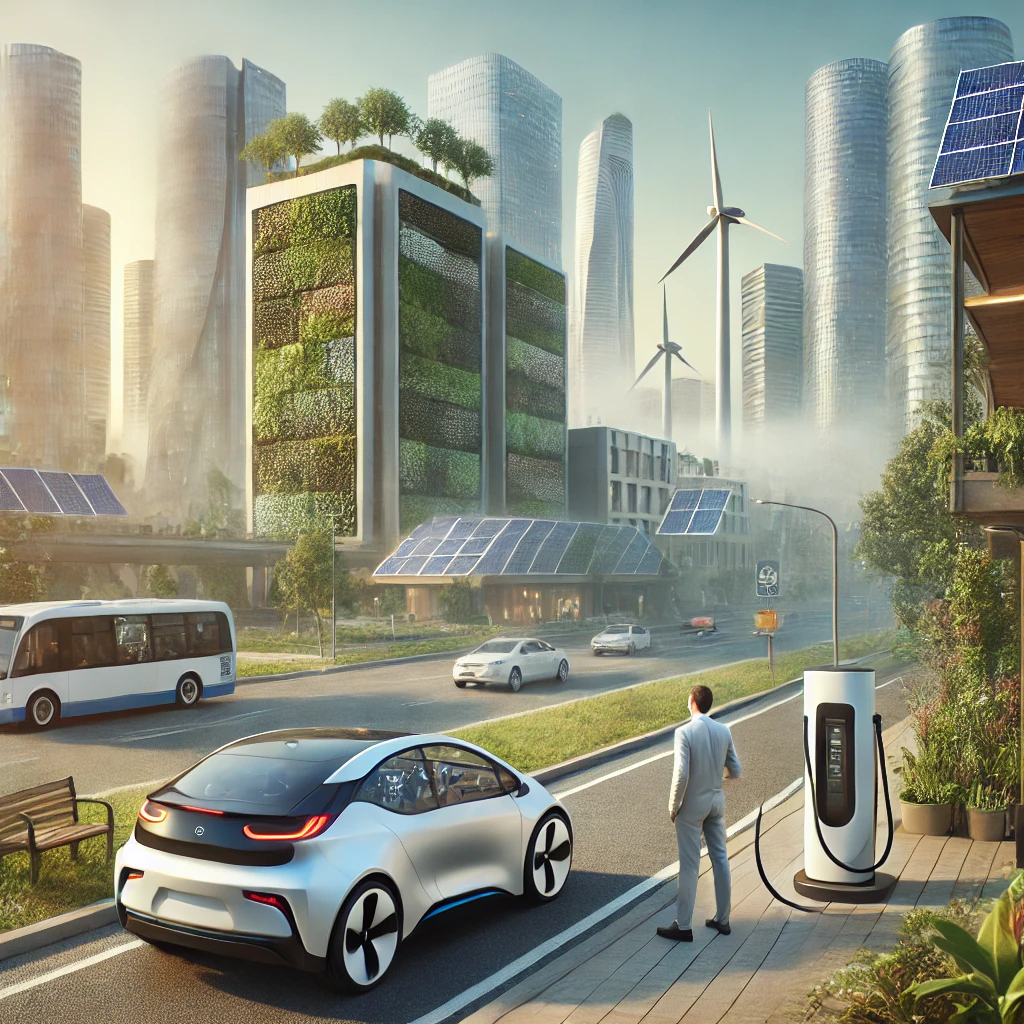
A pollution-free environment is crucial for the long-term health of our planet and future generations. While systemic changes are necessary, individuals can make impactful contributions by leveraging the power of modern technology. From the way we power our homes to the transportation choices we make, technology provides us with tools to live in ways that are cleaner, smarter, and more sustainable.
The Problem: Air and Water PollutionOne of the most pervasive environmental issues is pollution, particularly air and water contamination. Fossil fuel-based energy, industrial emissions, and vehicle exhausts contribute to poor air quality, leading to respiratory problems and premature deaths. Similarly, water pollution from plastic waste, toxic chemicals, and agricultural runoff threatens aquatic ecosystems and human health.
The Solution: Adopting Clean Energy TechnologiesIndividuals have the power to combat pollution by embracing clean energy technologies in their homes and personal lives. Solar panels and wind turbines are becoming increasingly accessible to homeowners, offering an effective way to generate renewable electricity. By installing solar panels on a rooftop, a household can reduce its dependence on the grid and significantly cut its carbon emissions.
If solar installation isn’t feasible, individuals can opt for green energy plans offered by utility companies. Many providers now offer electricity sourced entirely from renewable sources like wind or solar farms. Switching to these plans is a simple yet powerful step toward reducing one’s personal carbon footprint.
In terms of transportation, electric vehicles (EVs) offer a clean alternative to traditional gas-powered cars, which are major contributors to air pollution. Brands like Tesla, Nissan, and Chevrolet have made electric cars more affordable and accessible, with charging infrastructure rapidly expanding. Individuals who can’t switch to EVs immediately can still reduce their transportation-related pollution by carpooling, using public transit, or opting for biking and walking when possible.
The Problem: Plastic Waste and Environmental ContaminationPlastic waste is one of the most visible and troubling forms of pollution. Over 300 million tons of plastic are produced each year, much of which ends up in oceans, landfills, or incinerators, releasing harmful toxins into the environment. Single-use plastics, such as bottles, bags, and straws, are a major part of the problem.
The Solution: Reducing Plastic Use with TechnologyTo address plastic pollution, individuals can turn to innovative products and technologies that minimize or eliminate the need for single-use plastics. For example, reusable water bottles made from stainless steel or glass are increasingly popular, helping to reduce the demand for plastic bottles. Smart water purifiers installed at home can provide clean drinking water, eliminating the need for bottled water entirely.
For household goods, companies like Blueland offer cleaning products in tablet form, designed to be mixed with water in reusable containers. These products reduce plastic waste while also minimizing shipping-related emissions due to their compact packaging.
For food storage, beeswax wraps are a sustainable alternative to plastic cling film, while products like Stasher bags offer reusable silicone bags for storing food items. These small changes in individual habits can significantly reduce the amount of plastic waste generated daily.
Technology also offers recycling solutions. Apps like iRecycle help individuals find local recycling centers that accept items like electronics, glass, and hazardous materials, ensuring that these materials are disposed of properly rather than contributing to pollution.
The Problem: Industrial and Agricultural PollutionThough individuals may not directly contribute to large-scale industrial pollution, the products we consume daily—food, clothing, and electronics—often come from industries that heavily pollute the environment. Intensive farming practices, for example, rely on harmful pesticides and fertilizers that contaminate water sources and damage ecosystems.
The Solution: Supporting Sustainable InnovationsIndividuals can combat industrial pollution by making more sustainable purchasing decisions. Supporting companies that prioritize green manufacturing and ethical sourcing can drive demand for cleaner production methods. Apple and Dell, for instance, are working to reduce the environmental impact of their electronics by using recycled materials and designing products for longer life cycles.
In terms of food consumption, individuals can opt for products from organic farms that avoid chemical pesticides and fertilizers, or choose plant-based diets, which have a lower environmental impact than meat-heavy diets. Plant-based food alternatives, like those from Beyond Meat and Impossible Foods, allow people to enjoy the same flavors as meat while reducing the greenhouse gas emissions associated with livestock farming.
For home gardening enthusiasts, using composters and smart irrigation systems reduces waste and conserves water, helping create pollution-free environments on a personal level. Composting food scraps at home returns nutrients to the soil, reducing the need for chemical fertilizers.
The Problem: E-Waste and Hazardous MaterialsWith rapid technological advancement comes the issue of electronic waste (e-waste). Smartphones, laptops, and other electronics often have short life cycles, leading to a significant amount of e-waste, which contains hazardous materials like lead, mercury, and cadmium. When improperly disposed of, these materials can leach into the soil and water, causing serious environmental damage.
The Solution: Extending Device Lifecycles and RecyclingAs individuals, one of the most impactful ways to reduce e-waste is by extending the lifecycle of electronic devices. Instead of upgrading to the latest smartphone or laptop every year, individuals can make use of their current devices for longer periods by ensuring proper care and repair. Right to Repair movements advocate for policies that allow individuals to repair their own electronics instead of discarding them for minor issues. Websites like iFixit provide guides and tools to help people repair their devices, extending their usability.
Recycling e-waste properly is also crucial. Many companies and local governments offer e-waste recycling programs that safely extract valuable metals and dispose of hazardous materials. By participating in these programs, individuals can prevent e-waste from ending up in landfills, where it can contaminate the environment.
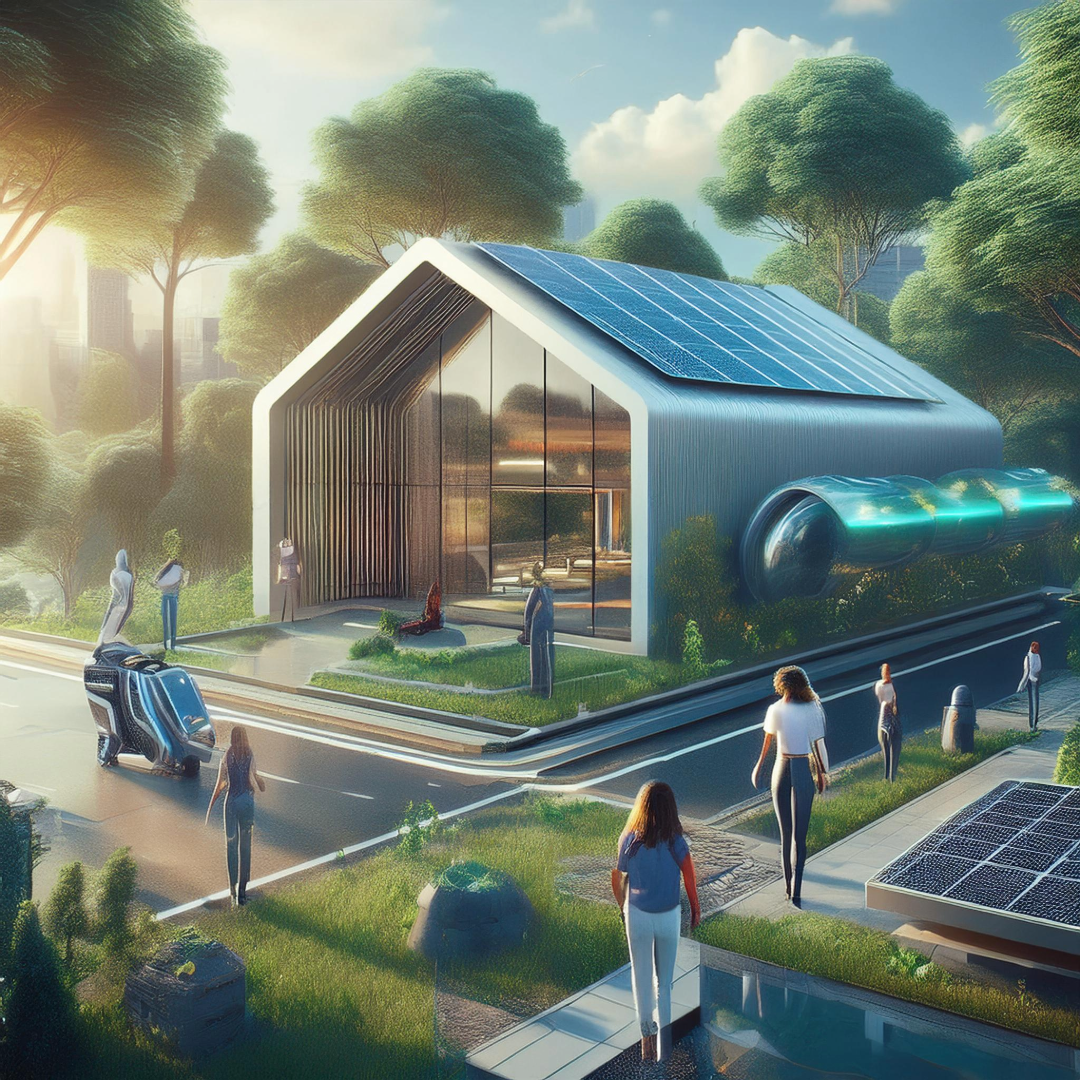
In the digital age, technology is not only shaping our world but also the way we live our daily lives. Individuals have the opportunity to leverage technology in a way that enhances both personal well-being and the collective advancement of society. The challenge lies in adopting technology mindfully—using it to promote well-being, creativity, and human connection without losing sight of our humanity.
The Problem: Over-Reliance on Technology and Social DisconnectWhile technology has improved efficiency and convenience, it has also contributed to a growing sense of isolation, reduced attention spans, and social disconnection. Screen addiction, excessive reliance on automation, and the decline in face-to-face interactions can have adverse effects on mental health and societal cohesion.
The Solution: Mindful Use of Technology and Digital BalanceIndividuals must learn to balance technology use with meaningful human experiences. For example, setting screen time limits and practicing digital mindfulness can prevent burnout and promote mental clarity. Apps like Moment track device usage, encouraging individuals to take regular breaks from screens and engage in real-world activities.
Technology can also be used to foster creativity and lifelong learning. Platforms like Coursera and edX allow individuals to learn new skills, ranging from programming to philosophy, without the limitations of geography or traditional educational systems. This not only enhances personal development but also contributes to the collective advancement of society by empowering individuals with knowledge and skills that can solve global challenges.
The Problem: Inequality in Access to TechnologyWhile technology has the potential to democratize access to resources and education, there is still a significant divide between those who have access to advanced technologies and those who do not. This digital divide exacerbates social and economic inequalities, particularly in developing regions.
The Solution: Supporting Ethical and Inclusive TechnologyAs individuals, we can support companies and organizations that prioritize ethics in tech development and strive to close the digital divide. Purchasing from companies that promote fair labor practices and contribute to social causes ensures that technological progress benefits all. Moreover, by advocating for policies that promote internet accessibility and education in technology, individuals can contribute to a more inclusive, equitable future.
.png)
In the pursuit of a sustainable future and technological advancement, it’s important that individuals do not lose sight of personal happiness, playfulness, and longevity. A balanced lifestyle that incorporates physical, mental, and emotional well-being can significantly contribute to an individual’s quality of life. Moreover, these elements help people maintain a positive and productive role in advancing society.
The Problem: Stress and Overwork as Barriers to HappinessIn today's fast-paced world, people often experience high levels of stress due to overwork, financial pressures, and societal expectations. Chronic stress is one of the leading causes of various health problems, including heart disease, mental health issues, and weakened immune systems. Stress not only reduces personal happiness but also negatively affects creativity, productivity, and one’s ability to contribute to society meaningfully.
The Solution: Incorporating Play and Leisure into Daily LifeOne of the most effective ways to counter stress is by embracing playfulness and leisure as essential parts of life. Research shows that engaging in creative play—whether through sports, arts, or hobbies—helps reduce stress and boosts mental well-being. Playfulness enhances problem-solving abilities, strengthens social bonds, and fosters a sense of joy and fulfillment.
As an individual, setting aside time each day for activities purely for enjoyment—such as painting, playing a musical instrument, or taking part in sports—can elevate mood and improve long-term mental health. Physical play in particular, such as dancing, hiking, or team sports, not only enhances physical health but also strengthens community ties.
Incorporating play into work life can also lead to increased job satisfaction and better performance. Companies like Google and Airbnb have adopted playful elements in the workplace, offering employees recreational spaces where they can unwind, brainstorm, and reconnect with their creativity.
The Problem: Sedentary Lifestyles and Lack of Physical HealthThe rise of technology has made life more convenient but also more sedentary. Many individuals spend hours sitting in front of screens, leading to poor posture, weakened cardiovascular health, and a lack of physical vitality. Sedentary lifestyles, coupled with poor dietary choices, contribute to rising rates of obesity, diabetes, and other chronic health conditions.
The Solution: Prioritizing Physical Health for LongevityMaintaining an active lifestyle is essential for longevity and overall well-being. Regular exercise—whether it's walking, yoga, cycling, or swimming—has been shown to extend life expectancy, reduce the risk of chronic disease, and improve mental clarity. For those working in tech-heavy or sedentary jobs, simple habits like standing desks, stretching routines, and periodic movement breaks can mitigate the negative effects of prolonged sitting.
Diet also plays a crucial role in supporting longevity. By choosing a plant-based or Mediterranean diet, rich in fruits, vegetables, whole grains, and healthy fats, individuals can promote heart health, reduce inflammation, and support cognitive function. These dietary choices not only benefit personal health but also contribute to environmental sustainability, as plant-based diets require fewer natural resources to produce compared to meat-heavy diets.
Blue Zones—regions of the world where people live exceptionally long and healthy lives—offer valuable insights into longevity. In places like Okinawa, Japan, and Sardinia, Italy, people prioritize physical activity, community involvement, plant-based diets, and mental well-being, demonstrating that a balanced lifestyle leads to both longevity and happiness.
The Problem: The Pursuit of Happiness in a Materialistic WorldMany people equate happiness with material success, leading them to accumulate possessions and wealth, often at the expense of environmental and personal well-being. This pursuit of external validation through material goods fosters a cycle of dissatisfaction and stress, as true happiness cannot be found in excess consumption.
The Solution: Finding Joy in Minimalism and Purposeful LivingTrue happiness and long-term contentment come from living a life aligned with one’s values, rather than accumulating material wealth. Minimalism encourages individuals to seek happiness in experiences, relationships, and personal growth rather than possessions. By simplifying their lives and reducing unnecessary consumption, individuals can find greater satisfaction and inner peace while contributing to the reduction of environmental strain.
Additionally, having a sense of purpose is essential for lasting happiness. Research shows that individuals who engage in purposeful activities—such as volunteering, pursuing creative projects, or mentoring others—report higher levels of life satisfaction and well-being. By dedicating time to causes that align with one’s values, individuals can make a meaningful impact on society while finding personal fulfillment.
Apps like Happify and Gratitude Journal encourage people to focus on the positive aspects of their lives, fostering an attitude of thankfulness and joy. Mindful practices such as gratitude exercises, journaling, and meditation help individuals find contentment in the present moment and resist the urge to chase materialistic goals.
.png)
The ideal lifestyle for individuals in a sustainable, mindful, and technologically advanced civilization involves more than just environmental consciousness or the use of cutting-edge technology. It requires a holistic approach that incorporates responsible consumption, mindfulness, playfulness, and personal well-being—all with an eye toward advancing human civilization and fostering peace and happiness.
By making small but impactful choices—opting for renewable energy, reducing plastic waste, embracing mindfulness, staying physically active, and finding joy in non-material pursuits—each person can significantly contribute to a pollution-free and sustainable future. A balanced life not only promotes personal happiness and longevity but also helps society thrive by fostering innovation, collaboration, and empathy.
Ultimately, the future of human civilization depends on the collective actions of individuals. Through intentional living, every person can play a role in creating a world where technology and nature exist in harmony, where progress does not come at the cost of the environment, and where the pursuit of peace and happiness drives human flourishing. This vision of an ideal lifestyle is not a distant utopia but a tangible reality, one that starts with each of us today.
